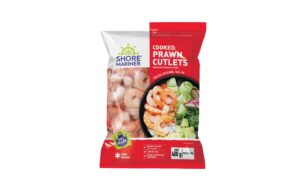Home » Food Products
Category Archives: Food Products
Frozen Prawns: Facts About Frozen Prawns
Frozen prawns are a popular choice for many seafood lovers. They are usually cheaper and easier to prepare compared to fresh prawns. And they’re readily available from a frozen prawns wholesaler.
These prawns are individually quickly frozen (IQF), keeping the cells intact to lock in nutrition and juiciness. They are also glazed to retain moisture in the meat.
Price
Frozen prawns are usually cheaper than fresh ones. They are also more convenient and less likely to spoil. However, they can spoil easily if not stored properly. It is important to keep track of your frozen prawns to ensure they do not go bad before you use them.
 If you’re looking for the best prawns to add to your favourite dishes, it’s a good idea to buy them from a reputable retailer that offers a wide variety of seafood. The prawns you choose should be well-frozen and should be free of any contaminants or parasites. You should also make sure they are packaged properly and labelled.
If you’re looking for the best prawns to add to your favourite dishes, it’s a good idea to buy them from a reputable retailer that offers a wide variety of seafood. The prawns you choose should be well-frozen and should be free of any contaminants or parasites. You should also make sure they are packaged properly and labelled.
Most prawns sold in supermarkets and seafood markets are actually frozen. That is because fresh prawns only have a short shelf life. Most prawns are frozen right after they’re harvested to preserve their freshness during shipping. Most people think that frozen-thawed prawns are not as good as fresh ones, but the truth is that they are just as tasty and healthy.
Quality
Prawns are harvested and frozen professionally in order to avoid any physical damage. The process of freezing also minimises the amount of ‘drip’ that occurs when thawed, which results in a plump, juicy and clean-tasting prawn that retains its original shape. In addition, ITC Master Chef’s prawns are individually quick frozen (IQF), which prevents them from clumping together during the thawing process and makes them easier to cook.
The products from the frozen prawns wholesaler are cooked and frozen at sea, which means they are processed onboard one of our large factory trawlers within 3 hours of being caught. This fast processing locks in the flavour, juiciness and vitamins, resulting in a superior product.
Packaging
Prawns are often frozen within 15 hours of harvest to maintain the quality of their flesh. It ensures that they retain their moisture and flavour while also preventing the development of bacteria. Moreover, the temperature is controlled throughout the supply chain to prevent spoilage and ensure that you get fresh prawns every time.
It is a common misconception that frozen, thawed prawns are less tasty or nutritious than fresh prawns. But FairPrice’s Ryan Chee, who handles prawns in the fresh seafood bay, shares that this is not true. “They are actually just as fresh and delicious, if not better!”
Fresh prawns should have smooth and shiny shells. They should also smell clean and produce a light salty scent. If a prawn produces a foul smell, it means that its cells have been damaged, and its meat will decompose quickly.
Frozen prawns can be used for various recipes, including soups, pastas and stir-fries. They are also suitable for grilling, steaming and poaching. You can also add them to salads and poke bowls. The best way to thaw them is by running them under cold water or leaving them in the fridge overnight.
Delivery
If you’re a seafood lover, chances are you would want to purchase your prawns fresh and unfrozen right off the boat. However, most of the prawns you find in supermarkets and seafood bays are frozen thawed prawns. So, are they better or worse than ‘live’ fresh prawns? Let us deshell three myths on these curvalicious crustaceans for you.
Unlike ‘fresh’ prawns, which may not be kept at optimal temperature, frozen-thawed prawns have been stored at -40 degrees Celsius, so they remain in their best condition. They have also been flash frozen, which ensures their freshness and locks in the juicy goodness and nutrients. Moreover, frozen-thawed prawns can be cooked just as well as fresh ones in prawn curry, fried rice, or even grilled.
Frozen prawns from frozen prawns wholesaler are also more affordable than fresh prawns. It is because the wholesalers purchase large volumes of prawns in bulk, which makes it possible for them to reduce the price without sacrificing quality. However, it is important to choose a reputable wholesaler who is committed to delivering the highest-quality products. Choosing the right wholesaler can save you time and money in the long run.
Frozen Food Exporting
MarkwellFoods frozen food exporting is a rapidly expanding industry that meets consumer demands. However, its success largely relies on technological innovations and changes in consumer tastes.
Although demand for frozen food continues to increase, consumer trust issues continue to arise. In addressing these challenges, the frozen food market has responded by emphasizing clean labelling and allergen-free products as critical strategies for success.
- Demand for convenience foods
Due to population growth and busy lifestyles, convenience foods have experienced tremendous demand worldwide, driving the growth of MarkwellFoods frozen food exporting markets worldwide.
 The global frozen food market is expected to experience significant compound annual growth over its forecast period. Key drivers for this anticipated surge include increasing consumer preferences, changing perceptions and rising disposable income. Furthermore, increasing demand for ready-to-eat and on-the-go products propels this market forward.
The global frozen food market is expected to experience significant compound annual growth over its forecast period. Key drivers for this anticipated surge include increasing consumer preferences, changing perceptions and rising disposable income. Furthermore, increasing demand for ready-to-eat and on-the-go products propels this market forward.
However, the frozen food industry still faces significant hurdles to growth. One such issue is consumers’ belief that frozen food loses nutritional value over time; this perception could severely hamper market expansion.
Another challenge stems from an increase in fresh fruit and vegetable consumption. Although fresh produce offers many nutrients, its shelf life can be limited, thus presenting frozen food manufacturers with storage issues for their supplies.
Despite these obstacles, the global frozen food market has experienced steady expansion over the years due to increasing consumer demand for ready-to-eat meals and technological developments that make these products more convenient.
Frozen foods have long been an indispensable staple of many households worldwide. Not only are they convenient, cost-effective and nutritionally complete meals, but there’s also a wide variety of flavours and combinations.
- Increased disposable income
MarkwellFoods frozen food exporting is an integral industry for several reasons. One is its convenience to consumers, offering them time and cost savings as they save both, thus increasing demand.
Frozen foods are popular due to being cost-effective options that help lower-income families afford them—furthermore, frozen food stores well without losing its nutrition over time.
Frozen foods can also be more accessible to store than their fresh counterparts, making them a smart choice for busy consumers in developing countries where space may be at a premium; frozen items are generally more accessible than fresh ones to transport.
Frozen food items, particularly meat and other frozen items, have become more readily available across a more comprehensive array of markets than ever before, providing consumers with many mealtime choices and further expanding the frozen food market in many ways – from developing consumers’ preferences to opening more opportunities for manufacturers.
These changes also considerably affect household incomes; urban non-poor households experience higher disposable income levels than rural farm households, although poor farm households still experience significant drops in disposable income levels.
Additionally, price fluctuations are likely to exacerbate income inequality among urban households susceptible to price shocks. Medium and large-scale farmers who produce marketable surpluses are especially prone to changes in relative prices that cause severe income disparity.
Sensitivity analyses employ different elasticities of income for maize demand (which govern how responsive households are to price changes) and higher and lower elasticities of transformation for oilseed crops (which define how quickly farmers can switch production between export and domestic markets). When oil processing subsidies are reduced significantly, rural households experience significant drops in disposable income – mainly medium and large-scale farm households – but urban non-poor families experience less dramatic declines.
- Technological advancements
Over recent years, the frozen food exporting industry has witnessed technological advancements that have significantly aided production while speeding up processes within cold chains and helping reduce costs. These advances have also reduced cost structures.
For instance, IQF technology enables food processors to freeze items quickly without refrigeration – helping them produce high volumes at lower costs.
Freezing food items is one of the most efficient methods for preserving them, helping prevent spoilage while maintaining original flavours and nutritional values.
Freezing is an energy-efficient, practical, and energy-efficient method; therefore, it offers an ideal preservation technique as an alternative to dehydration or canning.
- Changing consumer perception
The frozen food industry has grown increasingly popular due to its convenience, low costs, and ability to preserve foods longer. Rising disposable income and changing lifestyles also play an integral part in shaping this market.
Studies indicate that European consumers prefer frozen over fresh foods more strongly, perhaps due to the reduced effort involved with preparation; this appeals particularly to busy Europeans who wish for a healthy diet while limited time allows for practice at home.